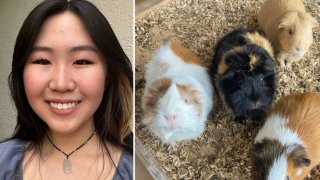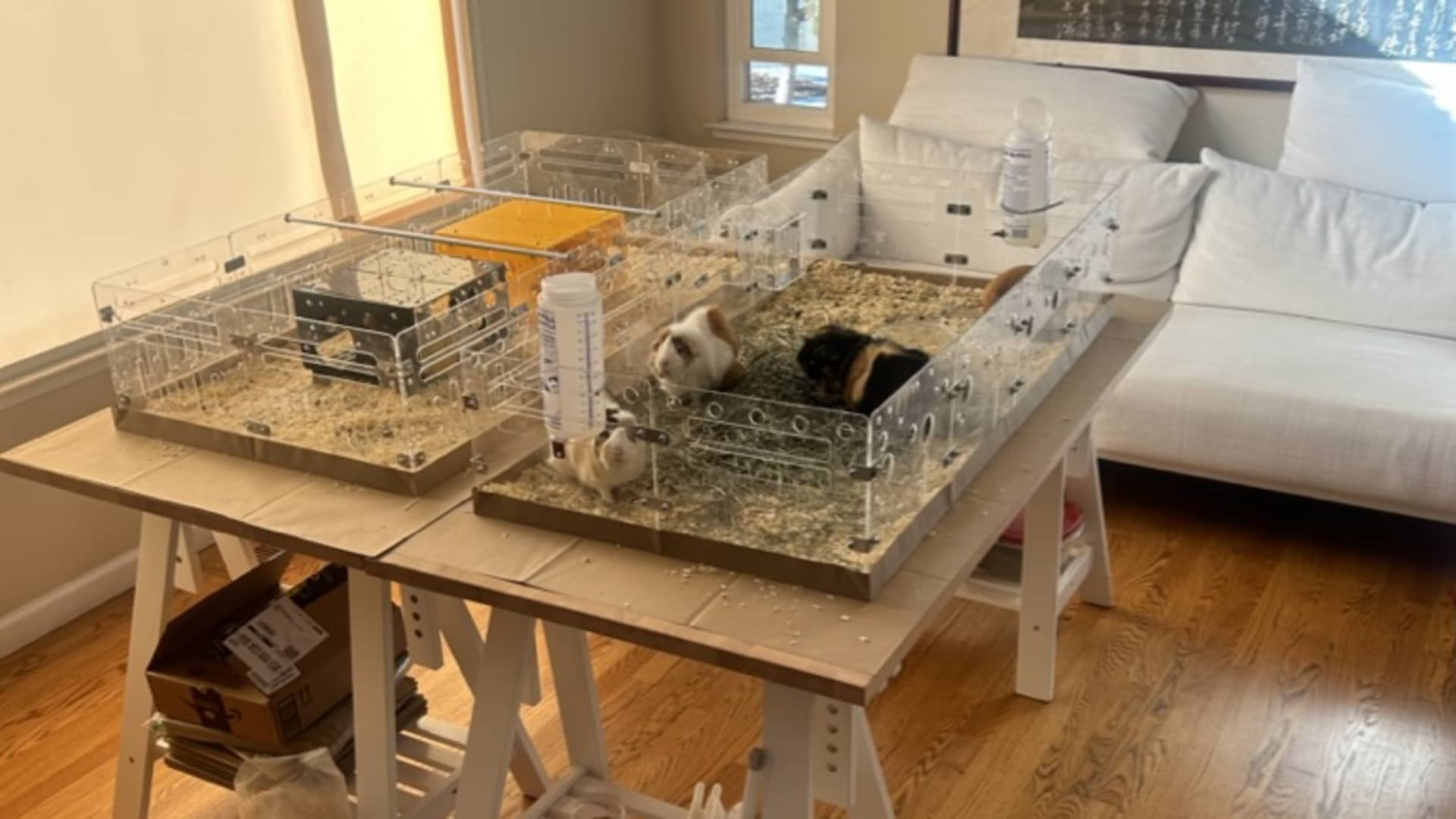
This story is part of CNBC Make It's Six-Figure Side Hustle series, where people with lucrative side hustles break down the routines and habits they've used to make money on top of their full-time jobs. Got a story to tell? Let us know! Email us at AskMakeIt@cnbc.com.
Some kids play sports and practice instruments after school. 17-year-old Bella Lin builds startups.
Lin started her first side hustle, an athleisure company called TLeggings, in seventh grade by developing a business plan for $23 leggings and contacting a factory in China to make them. It brought in as much as $300,000 in annual revenue, but was never profitable due to the highly competitive apparel market, Lin says.
She shuttered it, and switched to designing new enclosures for her two-pound pets. A longtime guinea pig owner, Lin says typical cages smell bad and don't offer much roaming space. She worked with a different Chinese factory to design an open-air alternative, and used $2,000 of her savings to launch a side hustle called GuineaLoft in November 2022.
Get a weekly recap of the latest San Francisco Bay Area housing news. Sign up for NBC Bay Area’s Housing Deconstructed newsletter.

GuineaLoft, which sells on Amazon, brought in more than $410,000 in revenue last year, according to documents reviewed by CNBC Make It. The company has a 25% profit margin, and all proceeds get reinvested back into the business, says Lin, a high school senior in Mountain View, California.
Any successful side hustle needs to check two boxes, she says: "[It'll work] if they have something they're passionate about, and [they find] a clear gap in the market. I think anybody can do that."
Money Report
Here, Lin discusses how to start a side hustle like hers, what she wishes she'd known before launching GuineaLoft and what it's like to live a double life as a high school student and an entrepreneur.
CNBC Make It: Do you think your side hustle is replicable? How much does it cost to start?
Lin: Yeah, I think so. If you want to create a few units [of a product] to list online, you need to order a few models, look into [search engine optimization] and buy a bit of marketing on Amazon to get started. It could cost anywhere from $1,000 to $5,000.
Then, gauge how people respond [before spending more].
Why did you switch from selling athletic leggings to a more niche product like guinea pig cages?
With TLeggings, I realized there were a lot of other companies trying to do [the same thing]. There was no room for innovation there.
With Guinealofts, I could feel a gap in the market that wasn't getting much attention. Small pet cages have pretty much been the same since they were invented. No one has come along to create something new.
I felt really confident about the product design because I knew what consumers wanted. But I didn't realize it was something they really needed. I would have gotten started on this a lot faster, even back in middle school, if I knew how receptive people would be to our cages.
What do you wish you'd known before launching your side hustle?
I didn't know about the layers of bureaucracy I would have to deal with.
[For example] this spring, when GuineaLoft sales were picking up, there was a glitch on Amazon's website and our cages kept getting listed under vinyls and CDs in the U.S. market. People weren't able to find our product for hours, and it took five three-hour-long calls to customer support to get that fixed.
Some online sellers complain about copycats. Have you run into that problem?
We've already had copycats on Amazon. I've personally bought and tried four of them. They're low quality, get poor reviews and [I suspect] cannot get sales.
Those cages are made by companies already doing a million other things, like backyard furniture or wedding decorations. They aren't committed to small animals and innovation like GuineaLoft is.
I am not seeking patents for GuineaLoft because they will not make a big impact in protecting our product design. Plus, we can simply undercut [competitors] — our materials are locally sourced and made in-house.
What's your advice for people hoping to replicate your success?
Be realistic about the viability of your business and have clear goals. Building the business is a little bit difficult, but I think especially now, there are a lot of resources. You could put your startup through an incubator if you feel like you're not too experienced.
Prioritizing your company is a really big thing, too. My guinea pigs are at home, and even when I'm out, I'm kind of always thinking about work. At school, I take a lot of economics courses. I'm a business manager on our student council and a business leader for our robotics team.
Then, when I go home, I'm replying to things from my team. It's always in the back of my head.
This interview has been edited for length and clarity.
Want to land your dream job in 2024? Take CNBC's new online course How to Ace Your Job Interview to learn what hiring managers are really looking for, body language techniques, what to say and not to say, and the best way to talk about pay. Get started today and save 50% with discount code EARLYBIRD.
Check out more from Six-Figure Side Hustle:
- 41-year-old's side hustle brings in $125,500 a year, and costs $0 to start: 'The riches are found in niches'
- 21-year-old ran his side hustle from his parents' apartment—now it brings in over $500,000 a year
- 55-year-old whose backyard side hustle brought in nearly $20,000 in a month: 'Anyone can do this'






